Logically enough, we began our tour of ancient Egypt with two of the oldest sites in the country: the original capital of Egypt, Memphis, and the burial ground of the Old Kingdom pharaohs, Giza.
There is relatively little left in Memphis, except bits of statues and other artifacts. Because it stands at the border of upper (southern) Egypt and lower (northern) Egypt, it was an important place to the ancient Egyptians. Although the center of government later moved further south, Memphis continued to be thought of as one of the cross roads of Egypt.
This is one of several statues of Ramses II found at the site. Ramses was pharaoh 1300 years after Memphis flourished. Still, he put his statues there because Ramses II put his statues EVERYWHERE. |
|
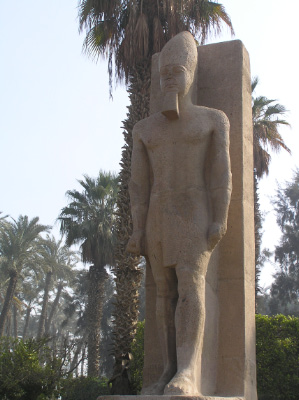 |
| |
|
|
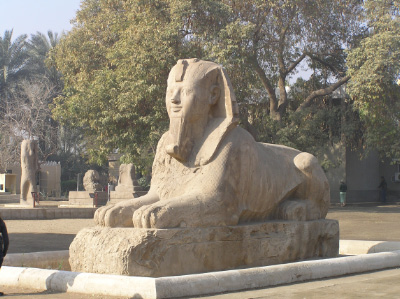 |
|
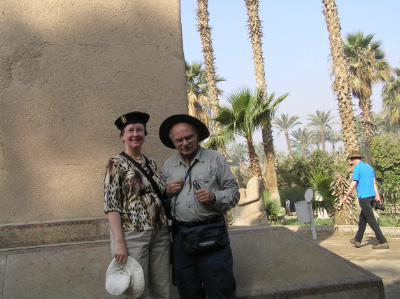 |
There is also a small Sphinx at Memphis, in much better condition than the much larger Sphinx across the river at Giza.
|
|
The guard (Tourist Police) insisted on taking a picture of us behind the Ramses statue. Having done so, he then demanded a tip for the service ($1). Needless to say, we did not argue with someone carrying an automatic rifle and demanding money. We were quickly learning to view guards and other "helpful" people with a jaundiced eye.
|
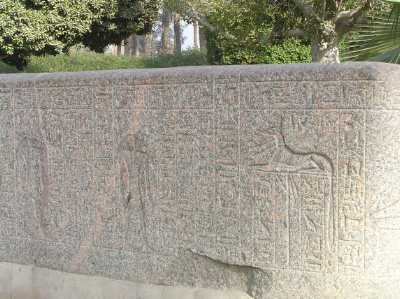 |
|
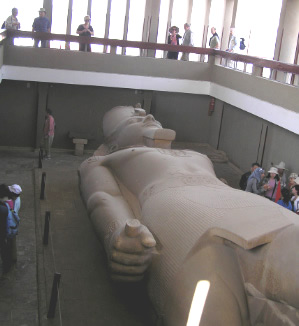 |
Memphis also had an elaborately decorated sarcophagus covered with hieroglyphics and a picture of a jackal (representing Anubis, the god of the underworld).
|
|
In addition to the statues of Ramses II outside, there is an even better preserved copy inside--one of three or four found on the site.
|
| |
|
|
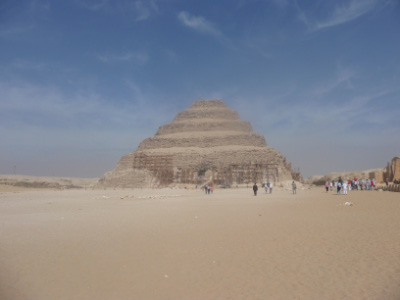 |
|
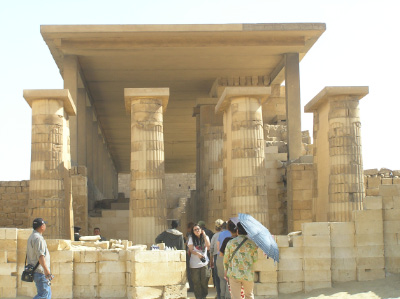 |
The first pyramid we visited was, naturally, the very first known pyramid: the Pyramid of Djoser at Saqqara (also called the Step Pyramid). The Egyptians had not quite mastered smooth pyramids yet.
|
|
This pyramid also has part of the (restored) complex that all the pyramids originally had, with a pillar-lined entrance leading to open courts used for cult rituals.
|
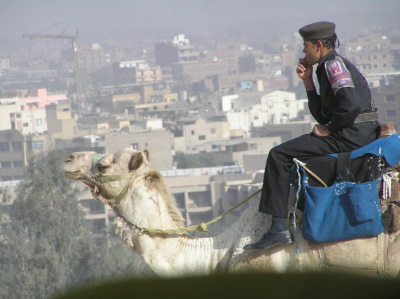 |
|
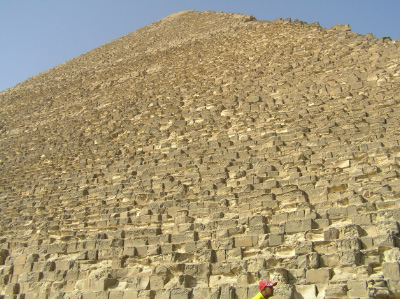 |
Security at Giza was fairly tight, with the Egyptian equivalent of mounted police on patrol.
|
|
Standing at the base of the Great Pyramid and looking up, it seems as though the structure goes on forever.
|
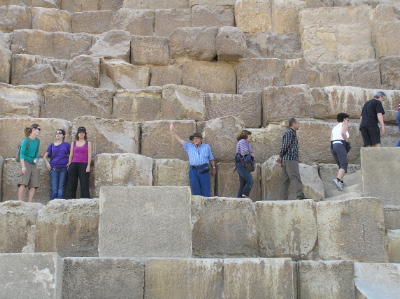 |
|
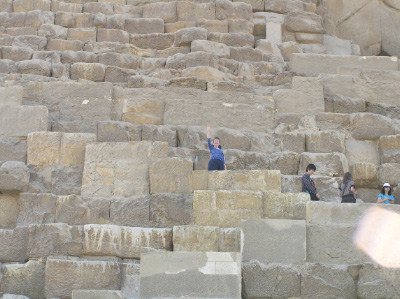 |
While tourists can no longer climb to the top of the pyramids, it is still traditional to climb a short way up, near the original entrance. So we did.
|
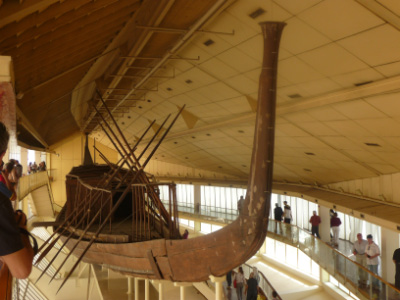 |
|
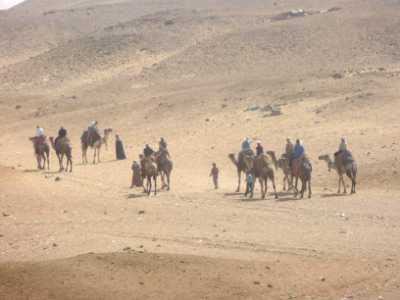 |
Also on display near the Great Pyramid is the Solar Boat. Four of these were found, in pieces, buried in pits around the pyramid. They were representations of the boats that carried the pharaohs to the afterlife. This one has been restored.
|
|
Camel rides were available, although both Pat and Chuck decided against it. Chuck didn't like the idea at all and to Pat it just seemed TOO "touristy."
|
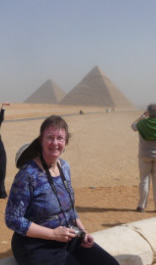 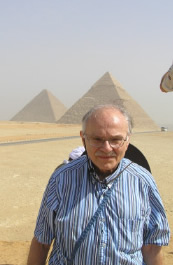 |
|
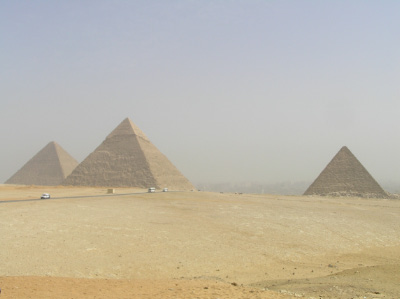 |
But, we did take the traditional photos of ourselves at the pyramid overlook point.
|
|
And here they are, looking almost exactly the same way they looked 150 years ago when visiting the pyramids became a European rage.
|
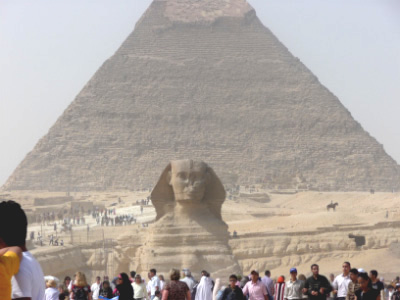 |
|
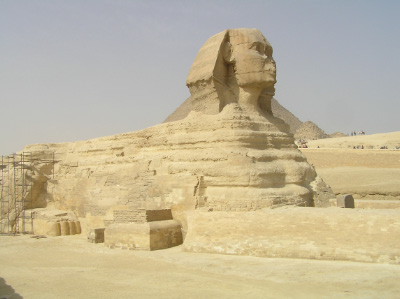 |
The Sphinx looks close to the Second Pyramid, although it is really quite a distance. Pat was able to go into the Second Pyramid, down a long, narrow, cramped corridor to the burial chamber. No photos allowed, although a lot of people were using their smart phones to take illegal pictures (and damaging the writing in the chamber with their flashes).
|
|
When the Sphinx was first encountered by European archaeologists, it was buried in sand to the neck. Now keeping it free of drifting sand is an ongoing problem.
|
























